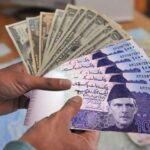Understanding the Exchange Rate between 1 USD to PKR
The exchange rate between the 1 USD to PKR is a crucial indicator of economic health and financial stability. This rate is determined by various factors, including economic policies, market demand, and geopolitical conditions. As global economies fluctuate, so does the exchange rate, impacting everything from international trade to personal remittances.
Historical Trends in USD to PKR Exchange Rates
Historical analysis of the USD to PKR exchange rate reveals a pattern of steady depreciation of the PKR against the USD over the years. This trend is largely driven by economic challenges within Pakistan, including inflation, political instability, and a significant trade deficit. Here are some notable trends:
- 2010-2015: During this period, the exchange rate saw a gradual increase from around 85 PKR to 1 USD to nearly 105 PKR to 1 USD.
- 2016-2020: This period experienced sharper increases, with the rate climbing to around 160 PKR to 1 USD by the end of 2020, exacerbated by economic uncertainty and inflationary pressures.
- 2021-Present: The rate has continued to rise, with current rates hovering around 285 PKR to 1 USD.
Factors Influencing the USD to PKR Exchange Rate
Several factors contribute to the exchange rate fluctuations between USD and PKR:
1. Economic Policies and Performance
Governmental economic policies, such as interest rates and inflation control measures, directly influence the exchange rate. High inflation rates in Pakistan tend to devalue the PKR, making it weaker against the USD.
2. Trade Balance
A country’s trade balance – the difference between its exports and imports – significantly affects its currency value. Pakistan’s persistent trade deficit has put downward pressure on the PKR.
3. Political Stability
Political stability or instability can cause significant market reactions. Uncertain political climates often lead to reduced investor confidence, which negatively impacts the PKR.
4. Remittances
Remittances from Pakistanis living abroad are a major source of foreign exchange. Fluctuations in these remittances can influence the demand for the PKR, thereby affecting its value against the USD.
Impact of USD to PKR Exchange Rate on the Economy
1. Inflation
A weaker PKR makes imports more expensive, contributing to higher inflation rates. This can reduce the purchasing power of consumers and increase the cost of living.
2. Foreign Debt
Pakistan’s substantial foreign debt is typically denominated in USD. As the PKR weakens, the cost of servicing this debt increases, placing additional strain on the national economy.
3. International Trade
The exchange rate affects the competitiveness of Pakistani goods in international markets. A weaker PKR can make exports cheaper and more attractive, but it also increases the cost of imported goods and raw materials.
4. Investment
Exchange rate volatility can deter foreign investment. Investors seek stable environments, and significant fluctuations in the exchange rate can be a red flag, impacting foreign direct investment (FDI) inflows.
Strategies for Managing Currency Risk
For businesses and individuals dealing with USD to PKR transactions, understanding and managing currency risk is essential. Here are some strategies:
1. Hedging
Hedging involves using financial instruments, such as futures and options, to protect against adverse currency movements. This can help stabilize cash flows and reduce uncertainty.
2. Diversification
Diversifying investments and revenue sources can mitigate the impact of currency fluctuations. By spreading risk across different markets and currencies, businesses can reduce their exposure to any single currency’s volatility.
3. Staying Informed
Keeping abreast of economic indicators and geopolitical events can provide valuable insights into potential currency movements. This knowledge can inform more strategic decision-making.
4. Using Forward Contracts
Forward contracts allow businesses to lock in an exchange rate for a future date, providing certainty and protecting against unfavorable rate movements.
The Future Outlook for USD to PKR Exchange Rate
Predicting future exchange rates is inherently challenging, given the multitude of influencing factors. However, by analyzing current trends and economic indicators, we can anticipate certain potential outcomes:
- Economic Reforms: Successful implementation of economic reforms in Pakistan could stabilize the PKR and potentially reverse some of its depreciation against the USD.
- Global Economic Conditions: Global economic conditions, including the performance of the US economy and geopolitical stability, will continue to play a significant role.
- Market Sentiment: Investor sentiment and market confidence will also be key determinants of the future exchange rate.
Conclusion
Understanding the dynamics of the USD to PKR exchange rate is crucial for anyone involved in international trade, investment, or remittances. By keeping informed about the factors that influence these rates and employing effective risk management strategies, businesses, and individuals can better navigate the complexities of currency exchange.


